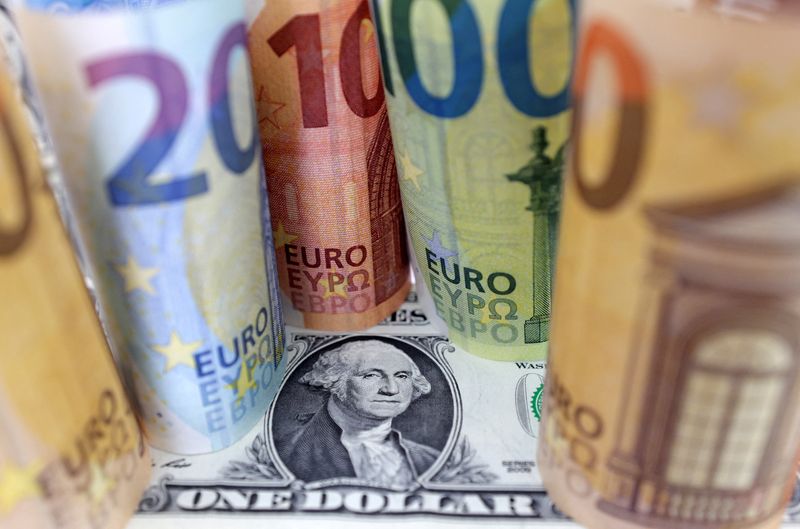Dollar falls ahead of PCE price data, markets weigh Trump tariff vow
By Alden Bentley and Stefano Rebaudo
NEW YORK (Reuters) -The U.S. dollar eased almost across the board on Wednesday as investors waited for inflation data and remained cautious about President-elect Donald Trump's tariff pledges, amid portfolio rebalancing before month end.
The dollar came under extra pressure after revised data showing gross domestic product rose at a 2.8% rate in the third quarter, as expected and the same as last month's first estimate. October durable goods orders rose a smaller than expected 0.2%, other data showed, while applications for unemployment benefits at 213,000 were a bit lower than last week's upwardly revised 215,000 jobless claims.
Dollar/yen fell to its lowest in about five weeks, standing 1.18% lower at 151.3. The weakening dollar lifted the euro 0.8% to $1.0568. The euro/dollar pair hit its highest in a week, while the dollar index , which measures the greenback against a basket of currencies including the yen and the euro, fell to its lowest since Nov. 13 and was off 0.7% at 106.09.
The main focus of the day will be the Personal Consumption Expenditures (PCE) price index due out at 10:00 a.m. EST/1500 GMT, before U.S. markets close for the Thanksgiving holiday on Thursday.
Trump's vows on Monday of big tariffs on Canada, Mexico and China, the United States' three largest trading partners, knocked their currencies lower and have left investors jittery.
Some analysts argued that inflation risks could prevent Trump from ushering in more disruptive measures.
"We believe that Trump realizes that his win was almost entirely due to 3i (LON:III )'s -- inflation, inequalities and immigration -- with prices being key," said Viktor Shvets, global head of desk strategy at Macquarie Capital.
"Unless there is an improvement, the electorate's revenge could be severe, and there is not much time, as within 12 months, mid-terms will dominate," he added.
Shvets noted that Trump has picked Scott Bessent as Treasury Secretary, who is expected to keep a leash on U.S. deficits and to use tariffs as a negotiating tool.
"The recent sharp dollar appreciation largely decreases the asset values in dollars outside U.S. and hence increases the rebalancing need to sell the dollar at the month-end," said Sheryl Dong, forex strategist at Barclays (LON:BARC ).
The outperforming yen has benefited from bets for a December rate hike in Japan, and position adjustments.
The dollar's selloff accelerated after the pair fell below the 200-day moving average at 151.998.
Analysts flagged some relief as the country is not in the firing line of Trump's possible tariffs.
"Japan has a strong hand in dealing with U.S. trade concerns," said Jane Foley, senior forex strategist at RaboBank.
It "is the U.S.'s largest overseas holder of U.S. Treasuries and the largest provider of foreign direct investment into the U.S.," she added.
A ceasefire between Israel and Iran-backed group Hezbollah came into effect on Wednesday, under a deal that aims to end hostilities across the Israeli-Lebanese border. Geopolitical tensions, with wars in the Middle East and Ukraine, have been a support for the dollar as a safe haven.
Against its Canadian counterpart, the greenback was little changed, at C$1.4057, after touching a 4-1/2-year high of $1.4177 on Tuesday.
The dollar remained off its highest against the Mexican peso since July 2022 from Tuesday, standing 0.1% firmer at 20.696.
In cryptocurrencies, bitcoin was up 2.93% at $94,333, digesting its run up to almost $100,000 last week.
Source: Investing.com
